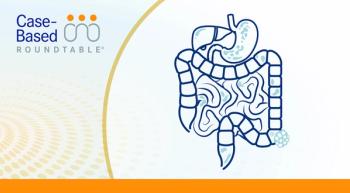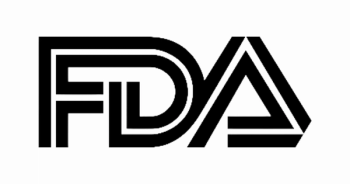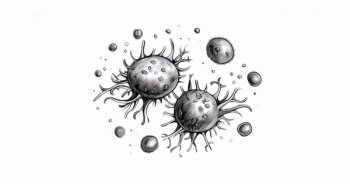
Orca-T Shows Safety, Feasibility in Reduced-Intensity Stem Cell Transplant
Orca-T with reduced-intensity stem cell transplantation was a safe, feasible alternative to conventional transplant in blood cancers, per phase 1 data.
Preliminary findings from the phase 1 study (NCT05088356), presented at the 2025 Transplantation & Cellular Therapy Meetings, showed that Orca-T combined with hematopoietic bone marrow stem cell transplantation using reduced-intensity conditioning was a safe and feasible alternative to conventional transplantation for patients with advanced hematologic malignancies.1
At a median follow-up of 10.4 months (range, 1-32), data from an interim analysis of the phase 1 study demonstrated that the median time for neutrophil engraftment was 15 days (range, 9-39) and the median time for platelet engraftment was 19.5 days (range, 14-70). The median donor chimerism for CD15 was 100% (range, 99%-100%) at day 30 was also 100% (range 98%-100%) at day 90. The median donor chimerism for CD3 was 96% (range, 28%-100%) and 99% (range, 76%-100%) at these respective time points.
The 12-month relapse-free survival (RFS) rate was 79% (95% CI, 65%-96%). The study included patients treated via a fully (8/8) HLA-matched related/unrelated donor (n = 27) and 7/8 HLA-mismatched related/unrelated donor (n = 3).1,2
In terms of safety, moderate chronic graft-vs-host disease (GVHD) was reported in 2 patients and grade 2 to 4 acute/late onset GVHD was observed in 4 patients. No patients experienced grade 3 or 4 acute/late onset GVHD or severe chronic GVHD.
“We observed robust myeloid and T-cell engraftment; thus no dose escalation of conventional T cells was needed,” Alejandro Villar-Prados, MD, PhD, a clinical fellow in the hematology/oncology fellowship program at Stanford University in Palo Alto, California, and coauthors wrote in a poster presentation of the data. “Orca-T in combination with RIC results in low incidences of acute and chronic GVHD, while maintaining a strong graft vs tumor effect.”
Orca-T is an investigational allogeneic T-cell immunotherapy comprised of highly purified regulatory T-cells, CD34-positive stem cells, and conventional T-cells.3 The cells are derived from the peripheral blood of related or unrelated matched donors.
Phase 1 Trial Design and Baseline Characteristics
The dose-escalation study examined the production feasibility and maximum tolerated dose of the T-cell component of Orca-T in combination with HSCT-RIC in patients with advanced hematologic malignancies.1 The study enrolled patients with acute myeloid, lymphoid, or mixed phenotype leukemia in complete remission (CR), CR with incomplete hematologic recovery, or beyond first CR without minimal residual disease (MRD).2 Patients who were not in morphologic CR with bone marrow infiltration of at least 10% by leukemic blasts or those in morphologic CR with MRD positivity per multiparametric flow cytometric analysis or a nucleic acid-based technique were enrolled. The study also permitted patients with primary refractory acute myeloid, lymphoid, or mixed phenotype leukemia; chronic myelogenous leukemia; or myelodysplastic syndrome.
Patients in the matched donor group were divided into 3 arms.1 Arm A1 (n = 11) received RIC chemotherapy with fludarabine (40 mg/m2), melphalan (50 mg/m2), and total body irradiation (TBI; 4 Gy), along with GVHD prophylaxis via tacrolimus. In arm A2 (n = 12) patients received RIC chemotherapy with fludarabine (40 mg/m2), thiotepa (10 mg/kg), and TBI (4 Gy), as well as GVHD prophylaxis with tacrolimus. Patients in arm A3 (n = 4) were treated with fludarabine (40 mg/m2), thiotepa (5 mg/kg), and TBI (3 Gy), with tacrolimus GVHD prophalaxis.
In the unmatched group, patients in arm C1 (n = 2) received fludarabine (40 mg/m2), thiotepa (10 mg/kg), and TBI (4 Gy), alongside GVHD prophylaxis with tacrolimus plus mycophenolate. Patients in arm C2 (n = 1) received fludarabine (40 mg/m2), thiotepa (5 mg/kg), and TBI (2-3 Gy) in addition to GVHD prophalaxis with tacrolimus and ruxolitinib (Jakafi).
At the time of the analysis arms A1, A2, and C1 were closed.
All patients initiated RIC on day –7 followed by HSPC infusion at a range of 1.5 × 106 cells/kg to 5.8 × 106 cells/kg with Treg infusion at a range of 2 × 106 cells/kg to 3 × 106 cells/kg at day 0. At day 2, patients received Tcon infusion at a range of 2 × 106 cells/kg to 3 × 106 cells/kg. At day 3, patients received FK with a dosing goal of 5 ng/mL to 10 ng/mL. On day 4, patients in arm C2 began ruxolitinib therapy at a dose of 5 mg twice daily, which was then tapered to 5 mg every 4 weeks in the absence of GVHD.
The primary objectives were the incidence of grade III to IV acute GVHD, time to engraftment, and the percentage of donor T-cell chimserism at day 30. Secondary end points included RFS, incidence of chronic GVHD, and incidence of serious infections.
At baseline, the median age in the overall population was 68 years (range, 60-74). The median Karnofsky performance status was 90% (range, 70%-100%) and the median hematopoietic cell transplantation-specific comorbidity index score was 2 (range, 0-5). Most patients were male (63%).
The study included patients with acute myeloid leukemia (n = 14), myelodysplastic syndrome (n = 10), acute lymphoblastic leukemia (n = 2), mixed phenotype leukemia (n = 1), and myelofibrosis (n = 3). Most patients (77%) had a complete morphologic remission prior to transplant with the remaining 23% having a partial response or stable disease.
Other Notable Safety Data
Additional safety findings from the study showed that 20% of patients died during the analysis period, which spanned October 2021 to September 2024. Causes of death included relapse (n = 2), infection (n = 2), and hepatic sinusoidal obstruction syndrome (n = 2). Patients experienced bacterial/bacteremia (n = 6), viral (n = 2), and fungal (n = 2) infections. One patient had engraftment syndrome, 2 needed a CD34-positive boost for poor graft function, and no patients experienced an infusion reaction. BMT-CTN Manual of Procedures (MOPS) grade 2 and 3 infection occurred in 7 and 3 patients, respectively.
“Fewer than 10% of patients experienced MOPS grade 3 infections in the first 3 months. These results merit larger multicenter studies to further validate these results,” Villar-Prados and his coauthors wrote in their conclusion.
Disclosures: Dr Meyer reported receiving funding from Orca Biosystems. Drs Pavlova and McClellan report being current employees of Orca Biosystems.
References
Villar-Prados A, Negrin R, Arai S, et al. Phase 1 trial results for patients with advanced hematological malignancies treated with allogeneic T cell immunotherapy and reduced intensity conditioning. Presented at: 2025 Transplantation & Cellular Therapy Meetings; February 12-15, 2025; Honolulu, Hawaii. Abstract 380.
Reduced intensity allogeneic HCT in advanced hematologic malignancies w/T-cell depleted graft. ClinicalTrials.gov. Updated February 20, 2024. Accessed February 14, 2025. https://clinicaltrials.gov/study/NCT05088356
Orca Bio announces completion of patient enrollment for the precision-T phase 3 study of Orca-T. News release. Orca Bio. June 5, 2024. Accessed February 14, 2025. https://orcabio.com/orca-bio-announces-completion-of-patient-enrollment-for-the-precision-t-phase-3-study-of-orca-t/








































